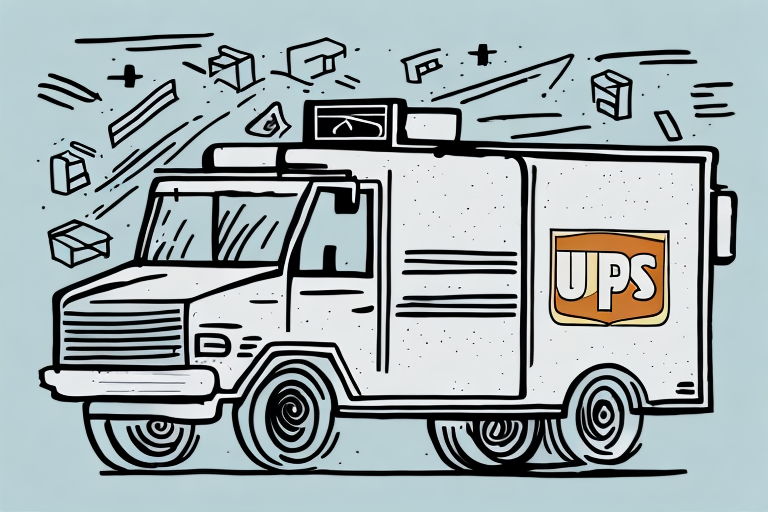Importance of Postal Service Insurance
Sending and receiving mail is a daily occurrence for many individuals and businesses alike. Whether you are mailing a letter, shipping a package, or receiving a delivery, it is crucial to ensure that your items are protected during transit. Postal Service Insurance plays a vital role in safeguarding your valuable and fragile items. Despite the best efforts of postal workers, packages and mail can sometimes be lost, stolen, or damaged in transit. By purchasing Postal Service Insurance, you can have peace of mind knowing that your items are covered in the event of these unfortunate circumstances.
Protection Against Loss and Damage
According to the United States Postal Service (USPS), millions of packages are shipped each year, and while the majority arrive safely, there are instances where items are lost or damaged. Insurance provides financial protection, allowing you to recover the value of your items without significant out-of-pocket expenses.
Cost Savings for High-Value Items
For businesses and individuals shipping high-value items, the cost of replacing lost or damaged goods can be substantial. Investing in Postal Service Insurance helps mitigate these risks, ensuring that you are not left with unexpected expenses that could impact your budget.
Types of Postal Service Insurance
The USPS offers various insurance options tailored to different shipping needs. Understanding these options can help you choose the right level of protection for your packages.
Priority Mail Express
This is the fastest and most comprehensive option, offering overnight delivery to most locations and up to $100 of insurance coverage. It's ideal for urgent shipments that require both speed and protection.
Priority Mail
Priority Mail provides reliable delivery within 1-3 business days and includes up to $50 of insurance coverage. It's a suitable choice for items that need to arrive quickly without the higher cost of Priority Mail Express.
First-Class Mail
First-Class Mail is the most affordable option, offering delivery within 1-3 business days with insurance coverage up to $50. This option is best for lightweight and non-valuable items that do not require expedited shipping.
USPS Retail Ground
USPS Retail Ground is the slowest yet most economical option, providing ground delivery with insurance coverage up to $100. It's suitable for non-urgent shipments and larger packages that do not need to arrive quickly.
International Insurance
For international shipments, USPS offers different insurance options based on the destination and value of the items being sent. It’s important to check specific coverage details for each country to ensure adequate protection.
Coverage and Limits
The coverage and limits of Postal Service Insurance vary depending on the selected insurance level. Understanding these parameters is essential for ensuring that your items are adequately protected.
Coverage Details
The maximum coverage available is typically up to $5,000, with costs increasing as the value of the item rises. It’s important to declare the accurate value of your items to receive appropriate coverage.
Exclusions
Not all items are eligible for insurance. Items such as cash, jewelry, and perishable goods are generally excluded from coverage. Additionally, damage resulting from improper packaging or handling may not be covered.
Claims Timeframes
To file a claim, you must do so within a specific timeframe, which varies based on the type of mail and the insurance level purchased. Promptly filing claims ensures a timely resolution and compensation.
How to Purchase Postal Service Insurance
Purchasing Postal Service Insurance is a straightforward process that can be done either online or in person at a post office.
Online Purchase
When shipping online through the USPS website, you can select the desired level of insurance during the checkout process. This method is convenient and allows you to easily add insurance to your shipment.
In-Person Purchase
If you prefer to ship in person, simply ask a postal worker at your local post office for assistance in purchasing insurance. They can help you determine the appropriate coverage based on your shipping needs.
Filing Claims for Postal Service Insurance
In the event of lost or damaged items, filing a claim with USPS Insurance is essential to receive compensation.
Steps to File a Claim
To file a claim, gather all necessary documentation, including the tracking number, proof of value, and evidence of damage or loss. Complete the claims form available on the USPS website or at your local post office, and submit it promptly.
Common Reasons for Claims
- Lost Packages: Items that do not arrive at the intended destination.
- Damaged Items: Packages that are visibly damaged upon arrival.
- Misdelivery: Packages delivered to the wrong address or recipient.
Filing claims as soon as possible increases the likelihood of a successful resolution.
Factors Affecting Insurance Rates
The cost of Postal Service Insurance is influenced by several factors:
- Value of the Item: Higher value items incur higher insurance rates.
- Shipping Method: Faster shipping options like Priority Mail Express are more expensive.
- Package Size and Weight: Larger and heavier packages may result in higher insurance costs.
- Type of Item: High-risk items such as electronics or jewelry may require additional insurance coverage.
Alternatives to Postal Service Insurance
If Postal Service Insurance does not meet your needs, several alternatives offer different levels of coverage and services.
Private Insurance Companies
Companies like Assurant and Insure Against Loss provide specialized insurance options for various shipping needs, often offering more comprehensive coverage than USPS Insurance.
Courier Services
Private courier services such as FedEx and UPS offer their own insurance options, which may include faster delivery times and more robust tracking capabilities.
Third-Party Shipping Insurance
Third-party providers like Shipping Insurance.com offer competitive rates and flexible coverage options, making them a viable alternative for those needing additional protection.
Maximizing Your Postal Service Insurance Coverage
To ensure that you receive the maximum benefit from your Postal Service Insurance, consider the following tips:
Proper Packaging
Use sturdy boxes, bubble wrap, and other cushioning materials to protect your items from damage during shipping. Proper packaging reduces the risk of injury to your items and potential insurance claims.
Accurate Declaration of Value
Accurately declare the value of your items when purchasing insurance to ensure adequate coverage. Over or under-declaring can lead to insufficient coverage or increased insurance costs.
Clear Labeling
Label your packages clearly with both the sender’s and recipient’s addresses to minimize the risk of misdelivery.
Tracking Your Packages
Use tracking services to monitor the status of your shipments. This enables you to identify and address any issues promptly, reducing the likelihood of needing to file a claim.
Understanding the Fine Print of Your Insurance Policy
Thoroughly reading and understanding the fine print of your Postal Service Insurance policy is essential to know what is and isn’t covered. Pay attention to:
- Coverage Limits: Ensure your items are within the coverage limits.
- Exclusions: Be aware of any items or circumstances that are not covered.
- Claim Procedures: Understand the steps required to file a claim successfully.
For more detailed information, refer to the official USPS Insurance Page.
Conclusion
Investing in Postal Service Insurance is a necessary step when shipping valuable and fragile items. By understanding the different types of available insurance, coverage limits, and the claims process, you can ensure that your items are protected during transit. Additionally, proper packaging, accurate value declaration, and clear labeling can help maximize your insurance coverage and prevent unnecessary claims. For those seeking additional protection, exploring alternative insurance options may provide more tailored solutions to meet your specific shipping needs.








